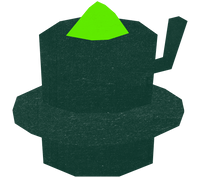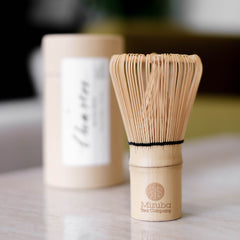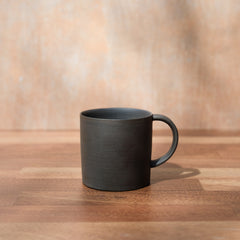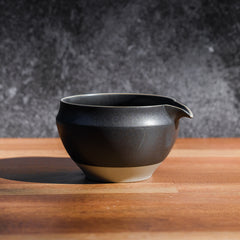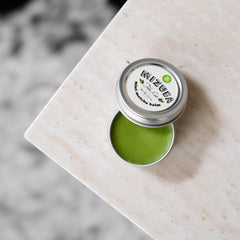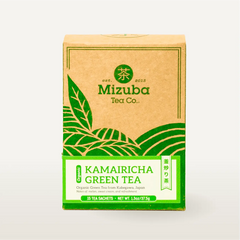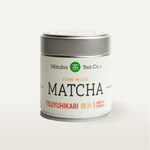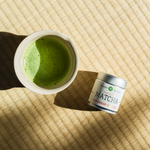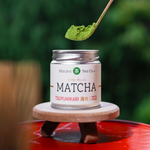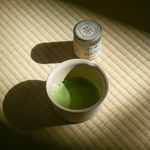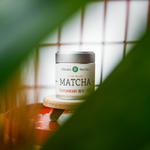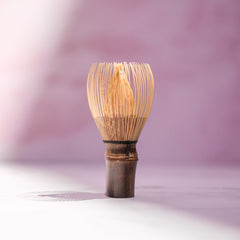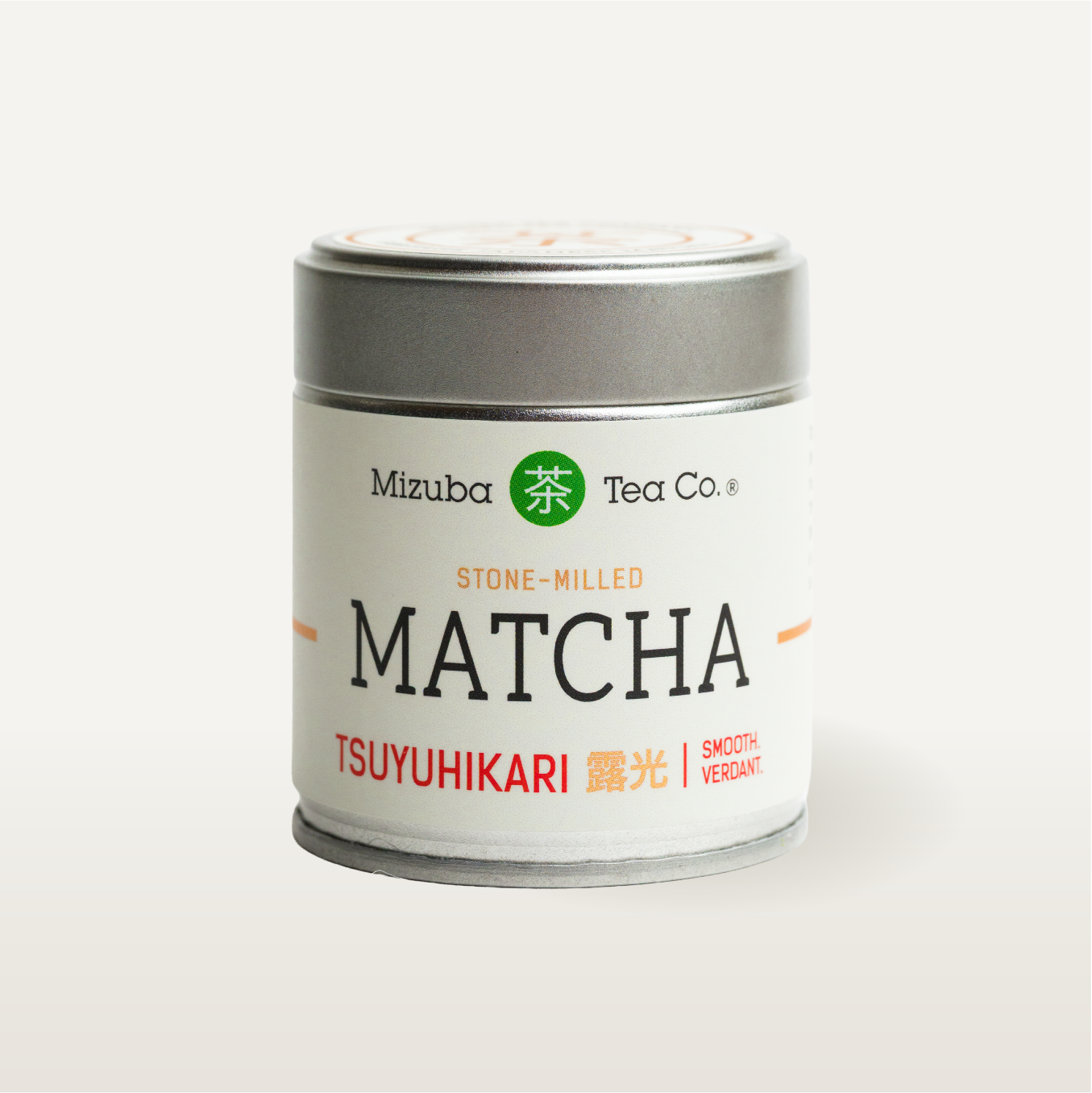
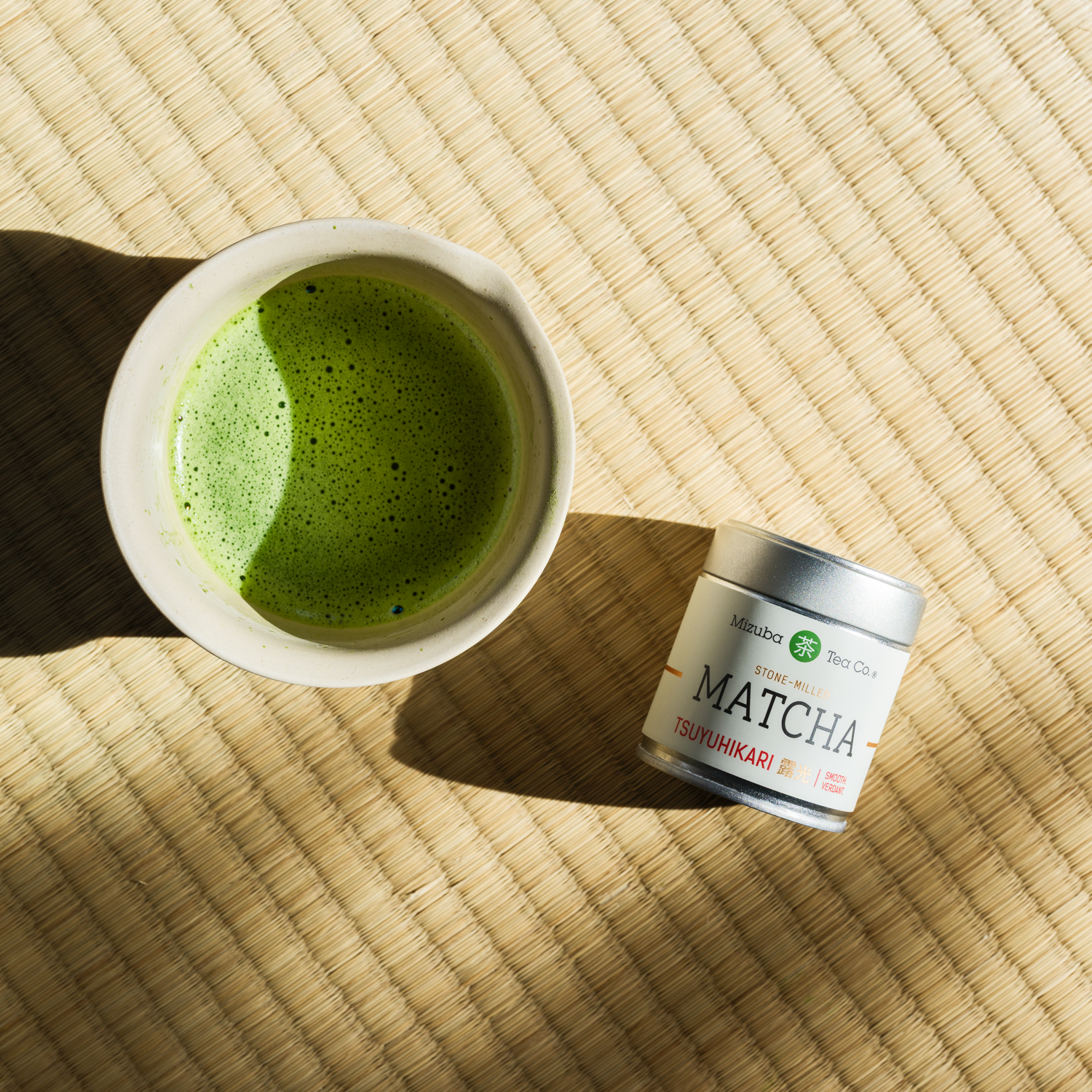
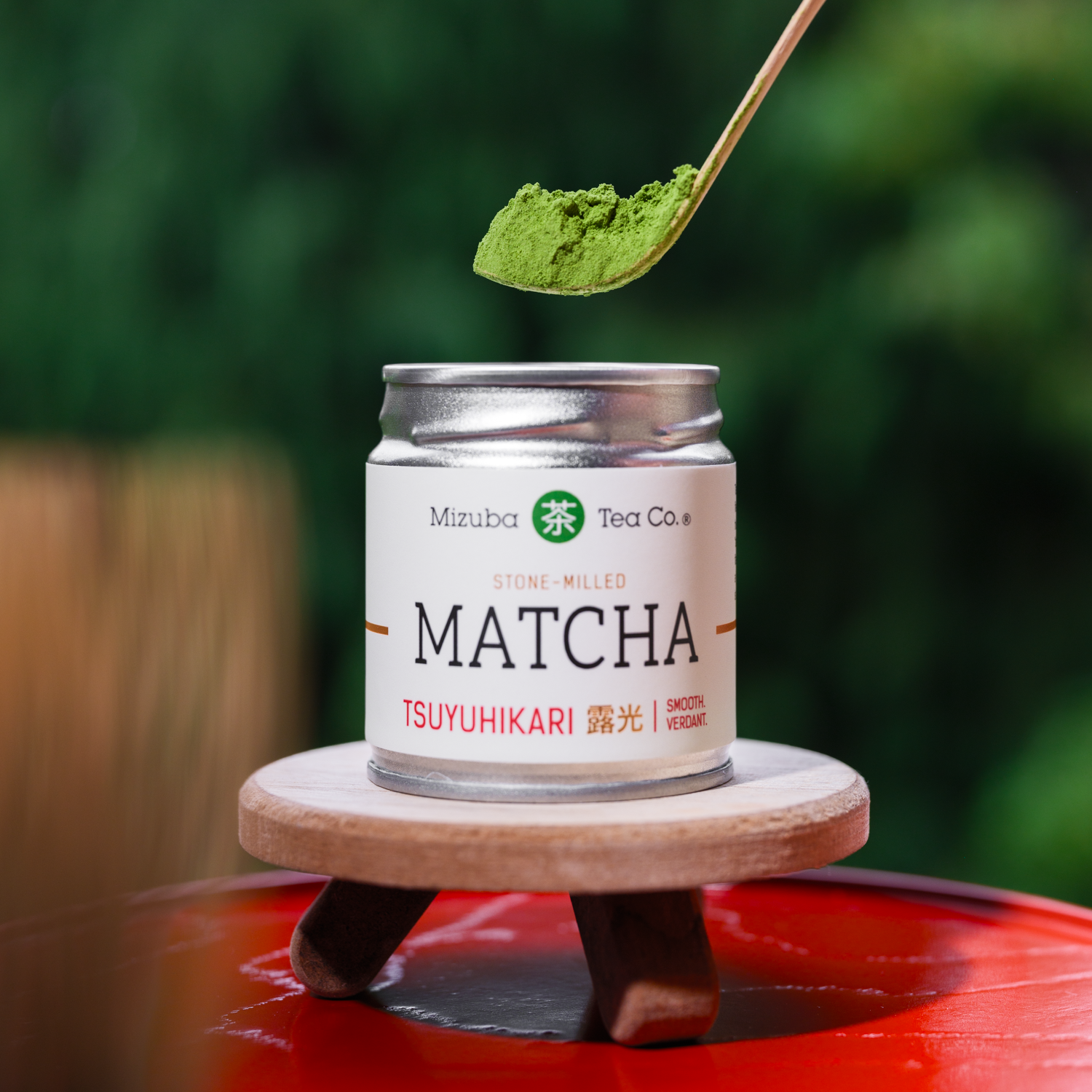
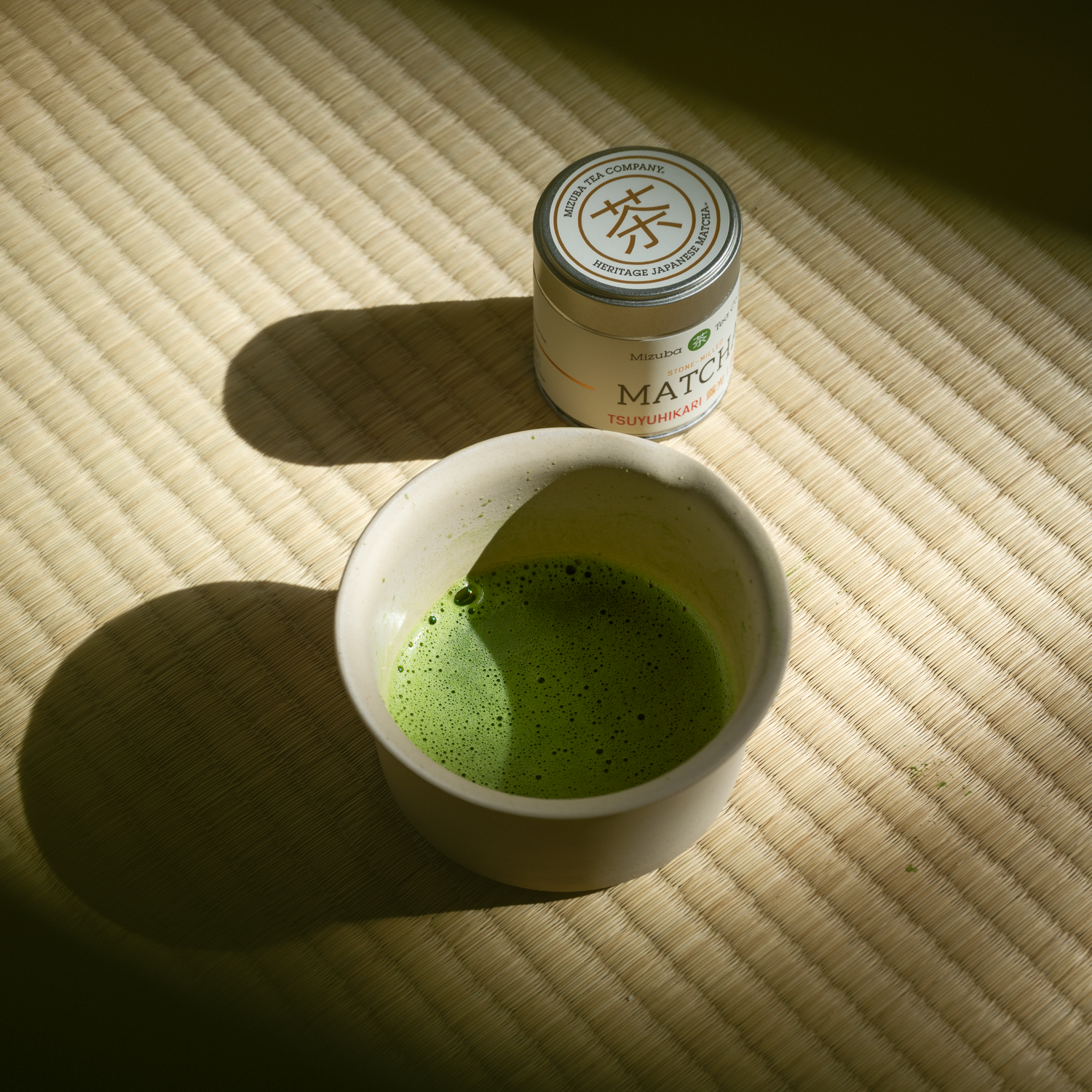
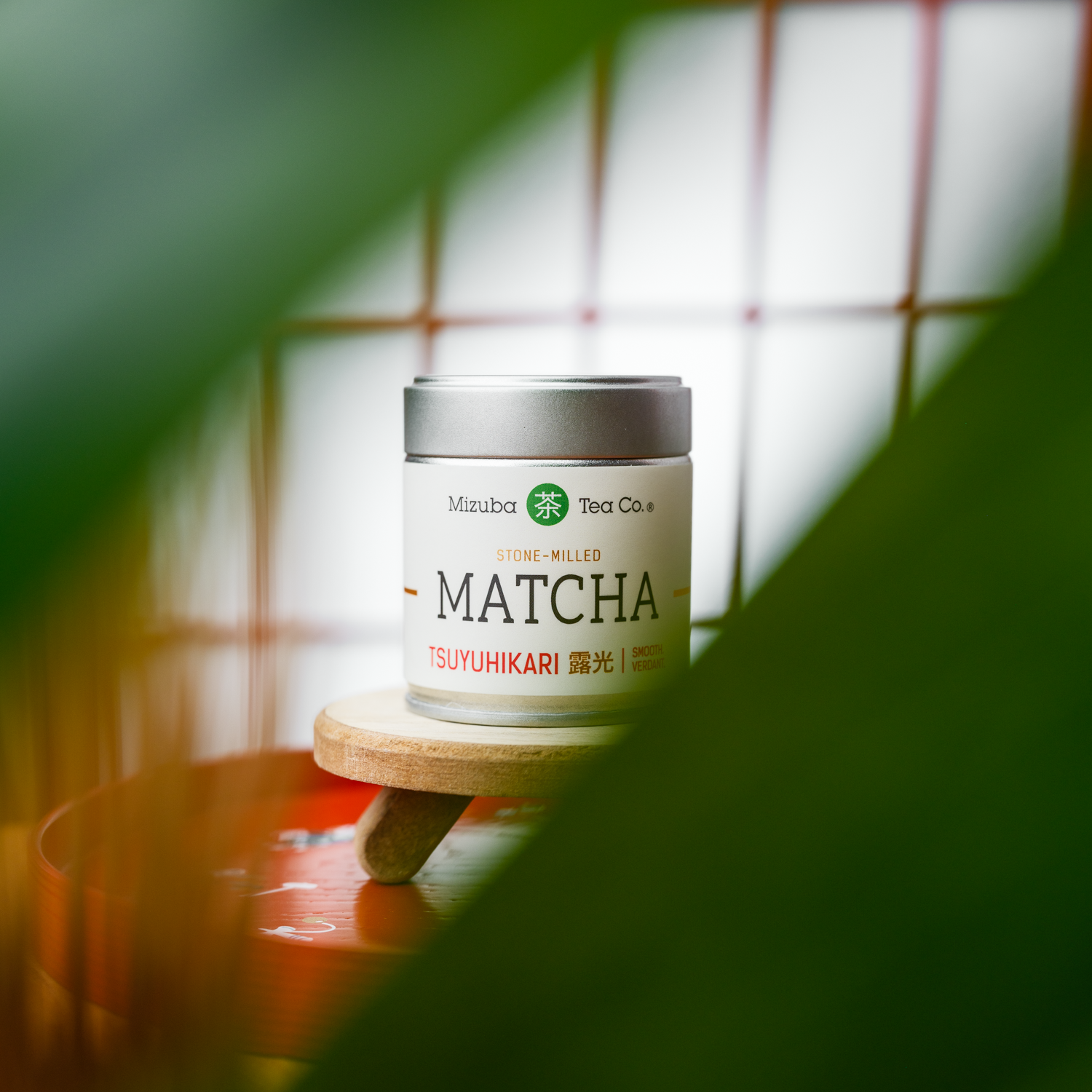
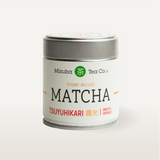
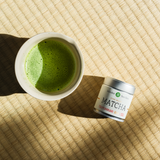
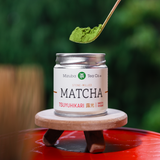
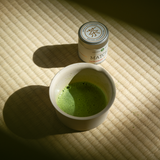
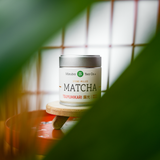
Tsuyuhikari Matcha Green Tea
- Description
- Tasting Notes
- How to Make Matcha
A very special matcha hailing from the mist-covered tea farms in Haruno, Shizuoka, this tea is lovingly farmed, stone-milled, and crafted by a husband and wife team. Tsuyuhikari translates to "dew light," and is a relatively rare and premium cultivar known for a vibrant, deep green liquor, deep umami, refreshing aroma, and exquisite flavor.
Tsuyuhikari is high in theanine, the amino acid responsible for sweetness and umami in tea. This gives it a smooth, rich flavor that's easy to enjoy for a wide range of tea drinkers. When brewed with cold water (mizudashi), the sweetness becomes even more pronounced, making it ideal for iced tea. Our Tsuyuhikari contains relatively low levels of catechins, so bitterness and astringency are minimal.
Aroma: bright and fresh, like a spring field in the mountains.
Flavor profile: deep, bodied, umami-forward with a note of hops. Sweet, long finish. One of our friends commented it tasted like, "a matcha dessert!"
How to brew:
- Warm your chawan tea bowl with hot water.
- Place 1.5-2g (1 tsp) of matcha into your chawan.
- Add 1 ounce of 160ºF-175ºF water to the tea and make koicha (a thick paste).
- Add about another 1.5-2 ounces of water.
- Whisk with your chasen until the tea is fully aerated to make usucha.
- Enjoy!
Interested in making lattes or tea on the go? Check out our videos.
Pairs Perfectly With:
Non-GMO, certified radiation & heavy metal free. Suitable for koicha preparation.
Size: 30g tin (15 servings)
Tsuyuhikari Matcha Green Tea
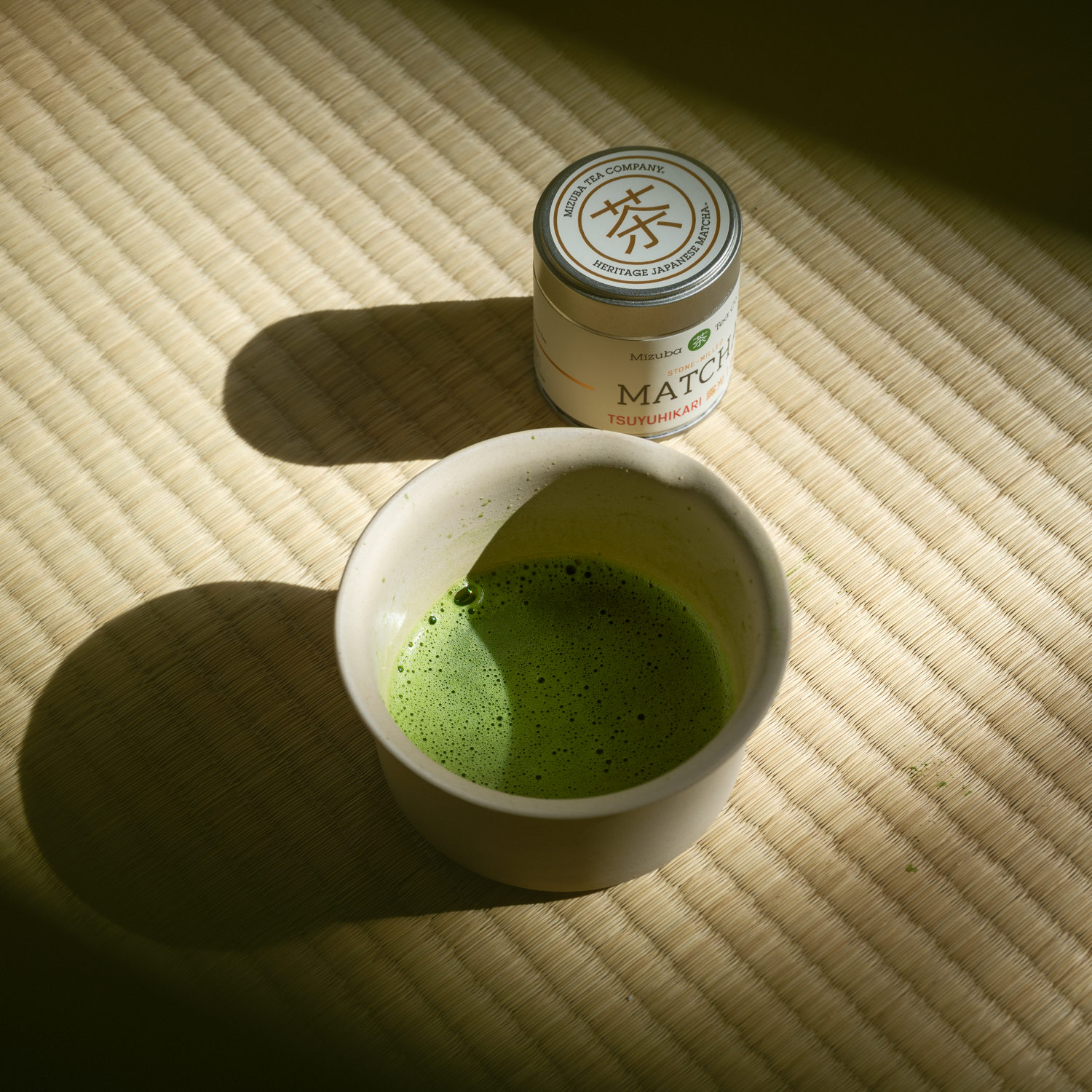
Our Producers Say...
"Tea cultivated in mist-covered tea gardens thrives under the abundant blessings of Haruno's natural environment. The flavor of the tea is a product of these natural gifts."
Tea cultivated in mist-covered tea gardens thrives under the abundant blessings of Haruno [area's] natural environment. The flavor of the tea is a product of these natural gifts.
- Atsumi san
About Tsuyuhikari Cultivar
Tsuyuhikari buds early in spring and is known for its resistance to cold weather. The cultivar was developed in Shizuoka Prefecture by crossing Shiz7132 (Shizunanaichisan-ni, known for its sakura-like aroma) with Asatsuyu. The name "Tsuyuhikari" combines the "tsuyu" (dew) from Asatsuyu and "hikari" (light), symbolizing the hope that this tea will become a bright light for Shizuoka's tea industry.
The cultivar was submitted for registration in 2000 and was officially designated as a recommended variety by Shizuoka Prefecture in April 2001. Among the many Japanese tea cultivars, Tsuyuhikari is considered relatively new.
One of Tsuyuhikari’s most distinctive qualities is its beautiful, bright green liquor. While different tea cultivars can produce various shades ranging from deep green to golden, Tsuyuhikari stands out with its eye-catching, fresh green hue. It looks especially beautiful when served in a clear glass – try it!
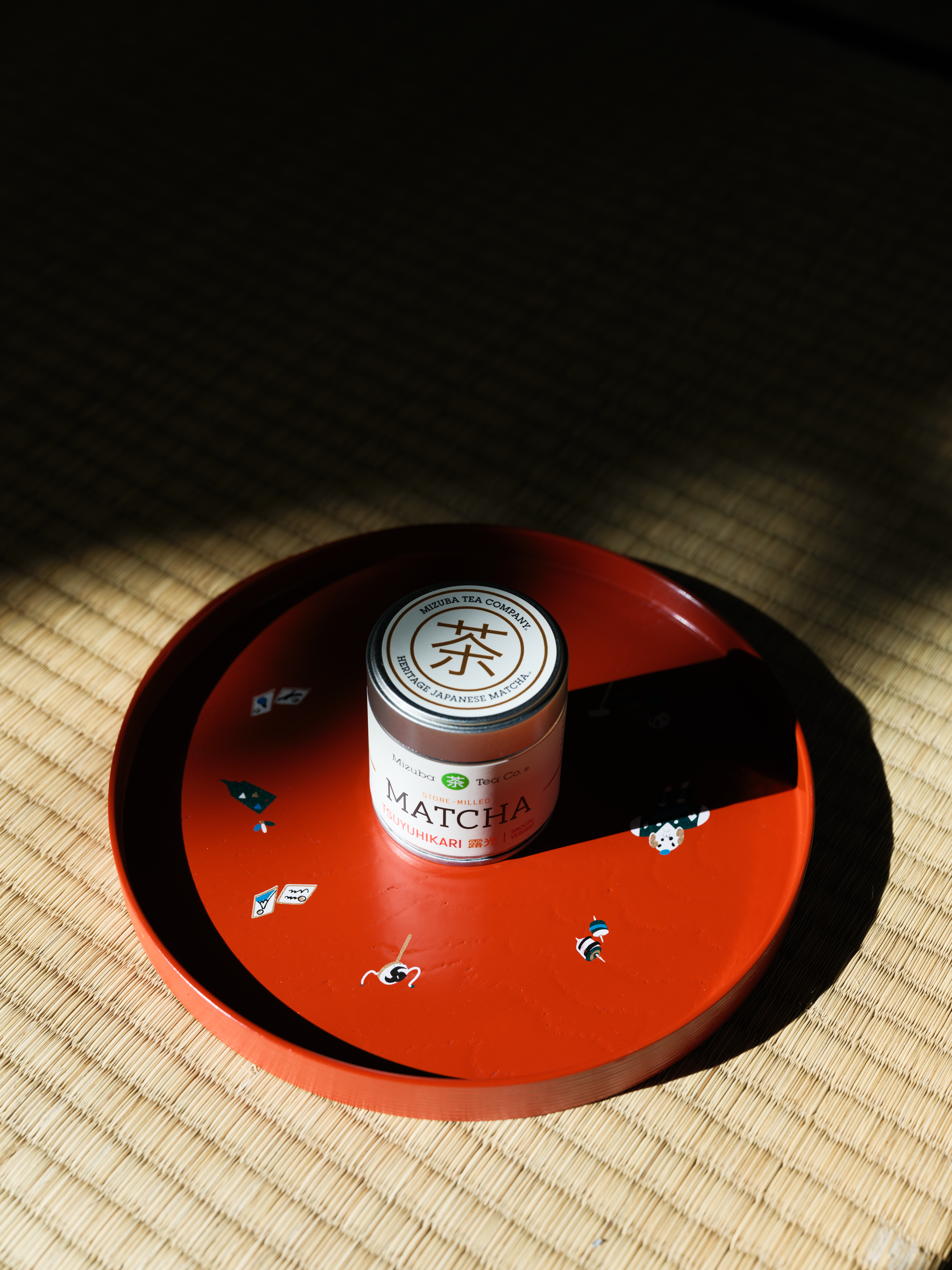
How To Make Matcha
Follow our simple guide below to make the most delicious Mizuba matcha! You can also see video guides here — including our favorite latte recipe.

It's time to make matcha! Spoon two chashaku scoops (1 tsp) into your matcha bowl or cup.

Add 1 oz. 160-175º F water. Work chasen (bamboo whisk) in a circle to make a paste.
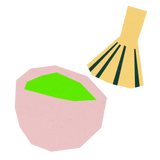
Add another 2-4 oz. water and whisk the tea in an M-shape motion until frothy. Enjoy!
Stone Milled
All Mizuba matcha is stone milled in Japan. This time-intensive process leads to a depth of flavor not found in conventional teas.
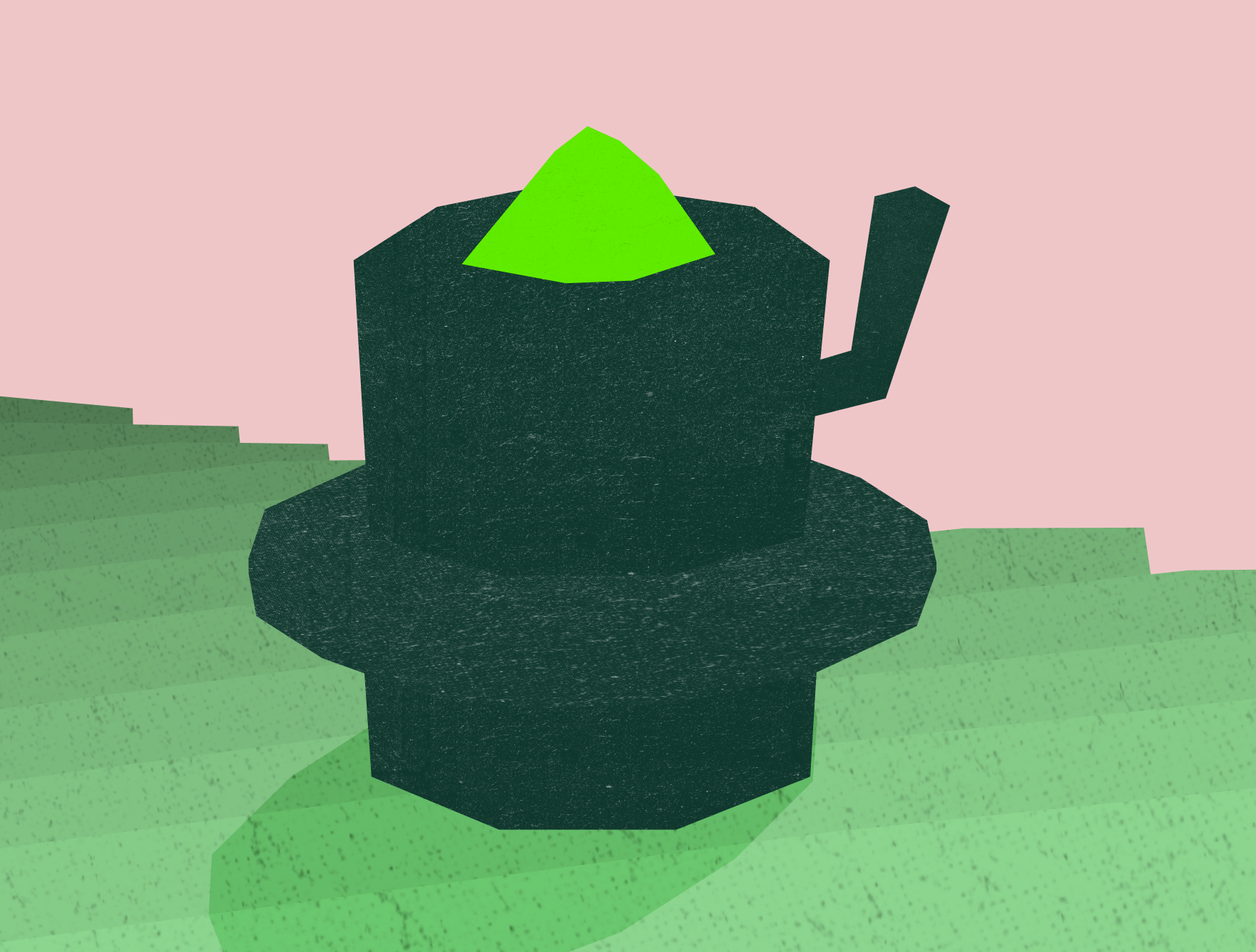
Which tea is right for me?
Our handy chart will help you find your new favorite matcha.
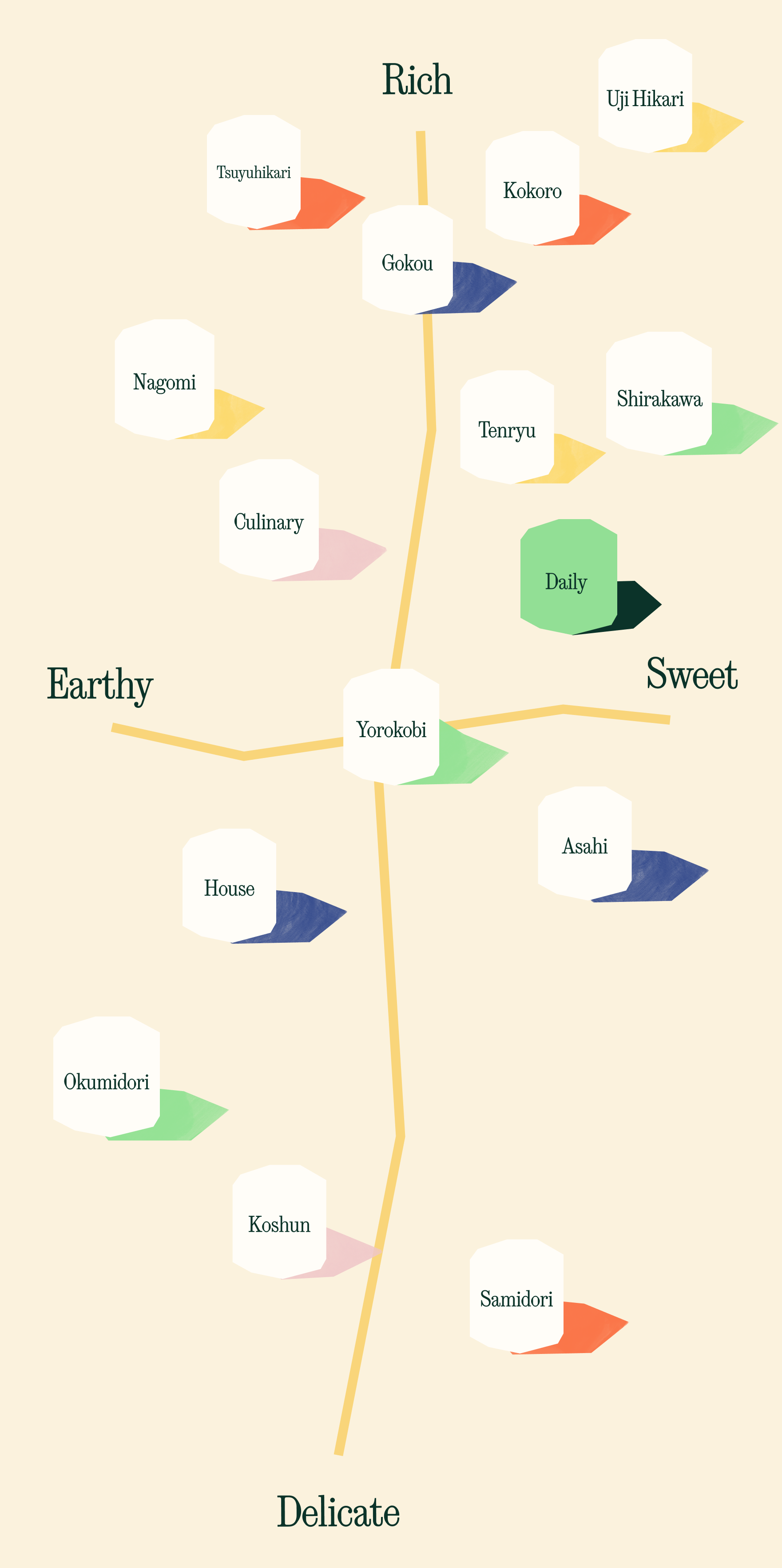
- Related products
- Recently viewed
